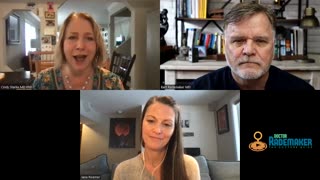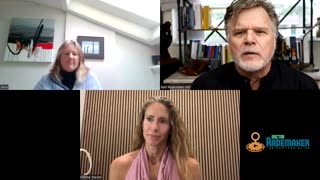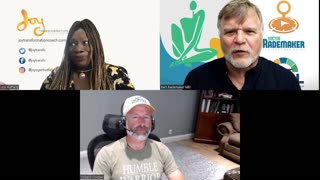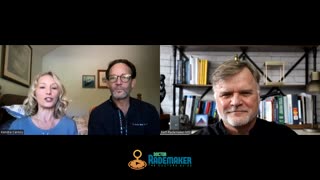“I’m much more returned to health, much more positive” - Nick, psychotherapist
I’ve run two pilot courses of the Daily Wellness Empowerment Program so far: one in 2021 (6-week long), and one in 2022 (8-week long) at the monastery. The Daily Wellness Empowerment Program (DWEP) is a checklist of 10 daily self-care practices for mental, physical, and social wellness. All of the DWEP practices are simple, DIY, free, and science-based.
There is a morning routine:
- Sitting Meditation (10 min)
- Hindu Squats and Hindu Pushups
Guidelines for the day:
- Whole Food Plant-Based Diet Before 7pm
- No Intoxicants
- Mindfulness
- Mental Nourishment
- Nature
- Meaningful Human Connections
And an evening routine:
- Arms Swinging (10 min)
- Bed By 10pm
During the program, we met once a week to:
- Check-In (30min): Participants paired up to report on their DWEP practice of the week. They mainly focused on positive reinforcement by celebrating their successes in following through with their goals and the positive differences they noticed in their wellbeing. They also shared their difficulties in following up with some of their goals and asked their DWEP buddy to either listen empathetically (without giving unsought advice) or offer them suggestions.
- Learn (1hr): I talked about the theory and practice of the 10 DWEP practices, trying to keep the learning experience pleasant and relevant to participants’ needs.
- Set Goals (20min): Each participant filled their SMART (Specific, Measurable, Action-oriented, Realistic, Time bound) goals spreadsheet for the upcoming week, for them to tick-off daily. Goals were totally up to the individual.
The feedback have been very positive in both courses. Some friends even asked to become DWEP instructors. After the second course I asked participants whether they would be willing to do a video testimonial. Here there are. I’m very grateful for their willingness to be on camera and support the project. Thank you!!
The project is still in its infancy. I have many ideas moving forward, such as working with researchers to get scientific validation for the program (the 10 DWEP practices are already science-based, it’s about validating the program as a whole), recording weekly DWEP meetings on video for people to follow online for free, training instructors who could teach in big cities, making an app, etc. This will take me a few years.
For now, if you’re interested in trying the DWEP, here is what you can do:
1. Take full responsibility.
Make sure you understand, this program only offers * general guidelines * for mental, physical, and social wellness. You are willing to take full responsibility for the ways in which you decide to incorporate these guidelines into your own life and for the consequences which may ensue. If you doubt whether certain aspects of the program are for you, please ask a medical professional you trust. As a general rule, use common sense and do not force yourself to do any DWEP practice which doesn’t feel right for you.
2. Get a DWEP buddy.
Optional but strongly recommended: find a DWEP buddy, someone who would be interested in doing the program with you. Share the link of this video with a family member or friend whom you think might be interested in this program, and ask them if they would want to give this a try with you. Share with your DWEP buddy what motivates you to take better care of yourself, and convene on a day and time the two of you could check-in weekly.
3. Learn about the DWEP practices:
To find out what is meant by these DWEP practices:
- read the 1-line summary instructions at https://docs.google.com/document/d/1k1sCP1Emm1CunIpV4_lnvM_ksY0tX4AH3X0wUjk3VUg/
- watch the instructional videos at https://www.youtube.com/watch?v=ZlHZhNZ41XM&list=PLttHmluBak1KPlixKdAAW-ZYG0JyIidiu
- and print your DWEP Instructions Manual at https://docs.google.com/document/d/1i4xc7F8zGE3FjsZD_Sa3XHGmtt8dK4SriJOy88_pNPU/.
4. Fill up your first DWEP SMART Goals Sheet and tick daily.
Print a few copies of the DWEP SMART Goals Sheet at https://docs.google.com/document/d/1k1sCP1Emm1CunIpV4_lnvM_ksY0tX4AH3X0wUjk3VUg/. Fill up your first sheet, setting goals for the week. Post the spreadsheet somewhere visible and tick at the end of each day.
5. Check-in weekly with your DWEP buddy and keep going.
At the end of each week, check-in with your DWEP buddy, whether online or in real life, in a spirit of empathy and mutual support. Fill another spreadsheet and keep going for a few weeks until you feel confident the program has become part of your life. Eight weeks seems like a good period for most people.
Happy DWEPing! 🙏💛
-
 5:35
5:35
Mental Health Revolution
1 year ago“It’s an overall hugely positive experience” - Mick, nature educator
5 -
 7:13
7:13
Mental Health Revolution
1 year ago“The program was really beneficial” - Matthew, yoga teacher
6 -
 36:12
36:12
THEDRSGUIDE
2 months agoBoosting Health: Explore the Link Between Emotional Wellbeing & Physical Health w Dr. Bart Rademaker
31 -
 28:53
28:53
Lucky CBD Life
9 months agoHarness Neuroscience to Achieve Lasting Weight Loss and Wellness with MyDailyChoice and ICan!
116 -
 3:00
3:00
Lucky CBD Life
10 months agoICAN Mind & Body: Harness Neuroscience to Achieve Lasting Weight Loss and Wellness #love #yourself
99 -
 3:23
3:23
Basma Kahin Channel
1 year agoThe benefits of therapy for mental health for Dummies
6 -
 37:54
37:54
THEDRSGUIDE
2 months agoExpert Wellness Strategies: Elevate Your Health Status with Proven Methods with Dr Bart Rademaker
23 -
 30:08
30:08
THEDRSGUIDE
1 month agoUnlock Wellness Secrets: Expert Tips & Insights for Vibrant Health With Dr. Bart Rademaker
89 -
 37:09
37:09
THEDRSGUIDE
3 months agoEmpower Your Mind and Body:Expert Mental Health Strategies for Achieving Life Balance w Dr.Rademaker
25 -
 34:41
34:41
THEDRSGUIDE
2 months agoHolistic Health Changes: Proven Strategies for Busy Professionals with Dr. Bart Rademaker
186